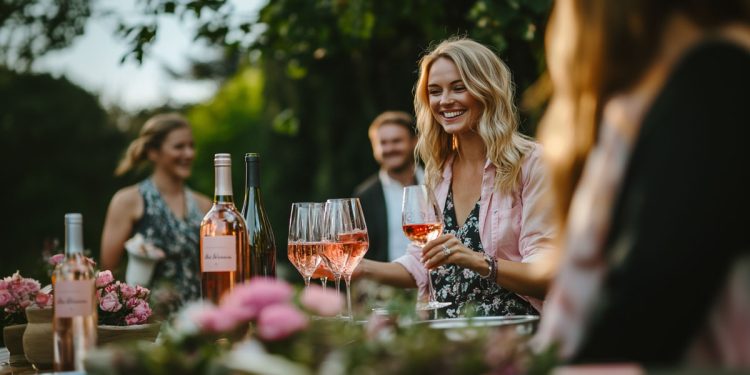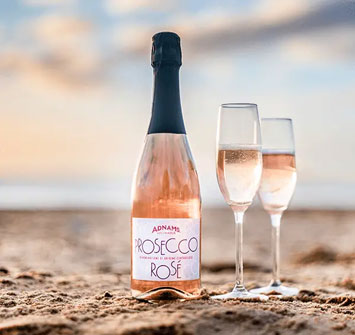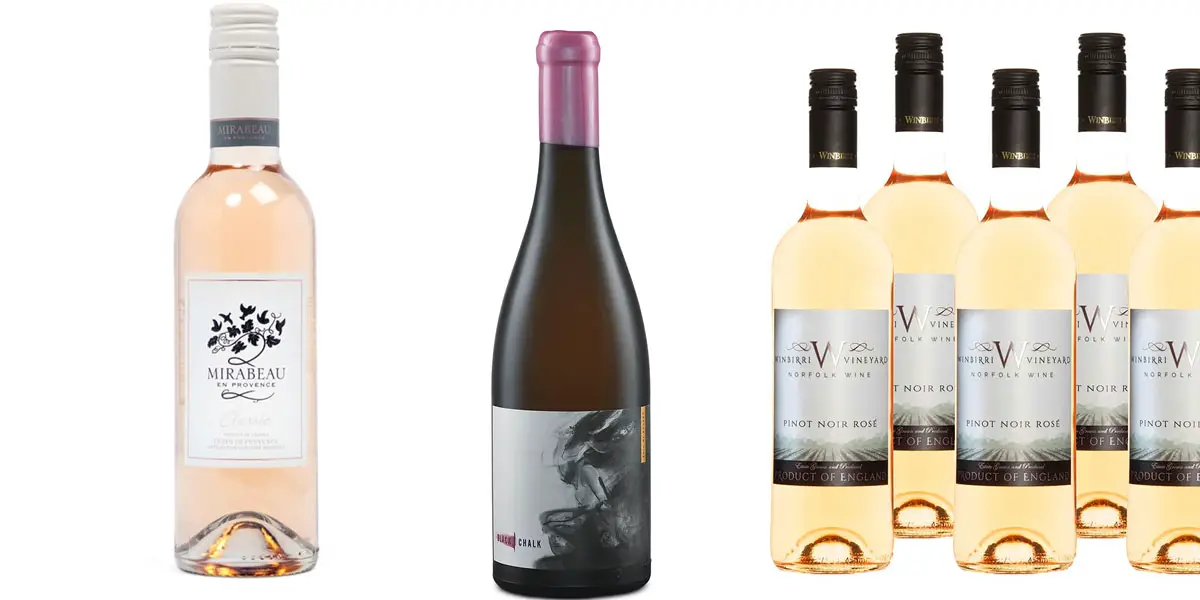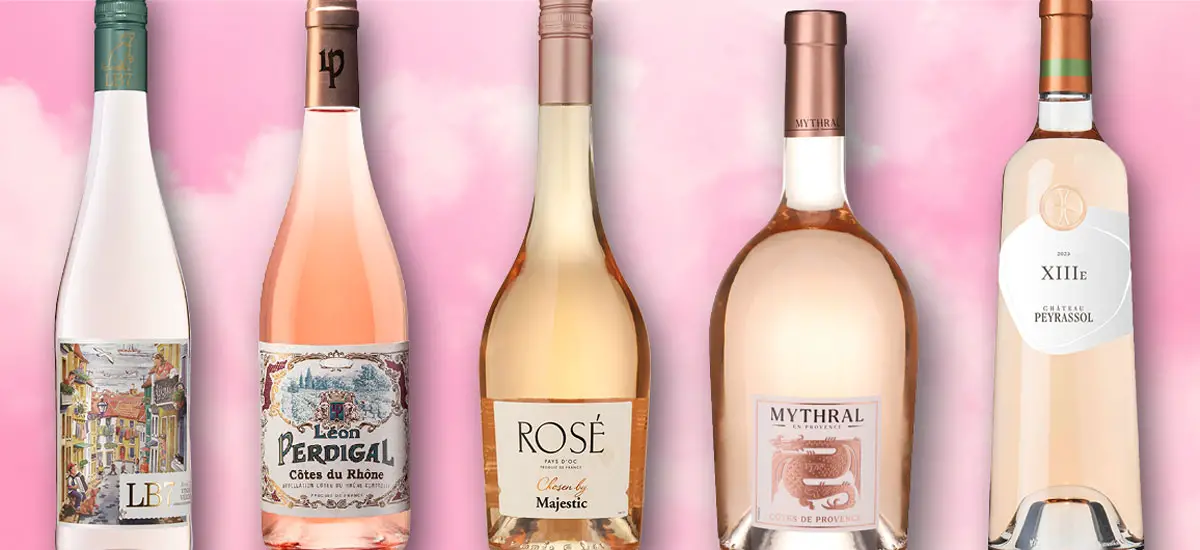The Rise of English Rosé: Best Bottles to Stock This Summer

By Kevin Pilley, May 2025
No wine cellar or fridge in summer should now be without English rosé.
You should always have some Black Chalk chilling, along with a bottle of Dancer in Pink or a Dancing Dog in there too. Perhaps, if there’s room, include some Devon Shoreline and something from the Hog’s Back as well.
A blend of 62% Pinot Noir, 35% Pinot Noir Précoce (a mutation of Burgundy’s red grape), and 3% Pinot Gris, Hampshire vineyard Black Chalk’s new Dancer in Pink rosé deserves a place in every well-curated wine rack. The wine is made in the Test Valley by Jacob Leadley, and his moreish handiwork should take pride of place in your rosé section – beneath Gusbourne’s Twenty Twenty Pinot Noir Rosé and above Simpsons Estate’s Railway Hill. And beside a bottle of Simon Roberts’s Fitzrovia.
You should decide which rosés belong within easy reach of your benchmark Provençals like Whispering Angel and Stephen and Jeany Cronk’s Maison Mirabeau – and which ones to put in front of, if not hide, the Kylie Minogue!
The fastest growing wine category in the UK, sales of English rosé have shot up by 200% over the past year. Some 33% of UK vineyards are now dedicated to Pinot Noir and 13% to Pinot Meunier, according to WineGB. The south of England is producing pinks with crisp acidity and fresh red-berry fruit. Drink warm-weather English rosé and you’ll taste ripe strawberry, strawberry shortcake, rhubarb, blossom, nutmeg, cereal, raspberry sorbet and, of course, rose petals.
“Blending house”
When planning your wine rack or cellar layout, dedicate at least one row especially to other Hampshire rosé wines – from Hambledon (the birthplace of cricket), Raimes, Exton Park, Coates & Seely and Hattingley. Save a space for Norfolk’s Winbirri, made by Lee Dyer.
Kent should be represented by Chapel Down, Nyetimber, Gusbourne, Hush Heath, Simpsons and Lamberhurst. Your Devon rosés row should include Sharpham and Lyme Bay’s Shoreline.
Near the Tavel, Mirabeau and Château Minuty should sit wines from the South Downs, and Sussex home-county wines like Dermot Sugrue’s Wiston Estate, America Brewer’s Oastbrook, Owen Elias’s Artelium, and Kristin Syltevik and Paul Dobson’s organic Oxney Estate near Rye, six miles from the English Channel. Don’t forget something from the Bolney Estate – one of the first English commercial vineyards, planted in 1972 by Janet and Rodney Pratt.
Sussex—the county of Gatwick Airport and Brighton – also boasts the Plumpton College Wine Science Centre, which has produced many winemakers since 2014. A year earlier, Trevor Clough and Jason Humphries created Digby near Arundel Castle – the UK’s first négociant, or blending house. Ann-Marie Tynan and Kristina Studzinski specialise in red wines at Off the Line in East Sussex.
 “Flying off the shelves”
“Flying off the shelves”
Folc is another fine English rosé and perfect if you’re running out of space, as it represents the best of both Kent and Sussex. It’s made from a unique blend of seven grape varieties sourced from the two southern counties: Pinot Noir, Pinot Meunier, Chardonnay, Bacchus, Reichensteiner, Schönburger and Dornfelder.
English rosé has much to offer. Says Sarah Driver of Rathfinny Estate in Sussex:
“Our ambition is that in twenty years’ time, you will walk into a bar or restaurant in New York or Beijing and you’ll be asked, ‘Would you like a glass of Champagne or a delicious glass of Sussex?’”
Rosé sales are climbing, according to respected UK wine merchants Laithwaites.
Sales of Corsican rosé such as Domaine Alzitella have soared, as have those of white Zinfandel, including Petticoat. Pink wines are flying off the shelves and topping e-commerce sales. Premium rosés like the Tasmanian Jansz NV are proving to be the drinks of spring and summer. And you can’t go wrong with Anjou’s Olivier Dubois.
Adnams Prosecco Rosé and ASDA Freixenet are good calls too.
“More concentrated”
And never forget Majestic, which offers Whispering Eagle, Mythral, Château Peyrassol, Léon Perdigal (Côtes du Rhône), LB7 Vinho Verde and Chosen By Majestic – among many other delicious options.
Of course, you could go the bleeding Champagne route.
To make a saignée rosé, a portion of the juice is “bled” off the tank of crushed red grapes. What’s left in the tank continues fermenting into red wine, now with an increased skin-to-juice ratio. The resulting red is more concentrated, with a deeper colour. The removed juice goes into a separate tank and ferments into rosé.
As exemplified by Drappier.












